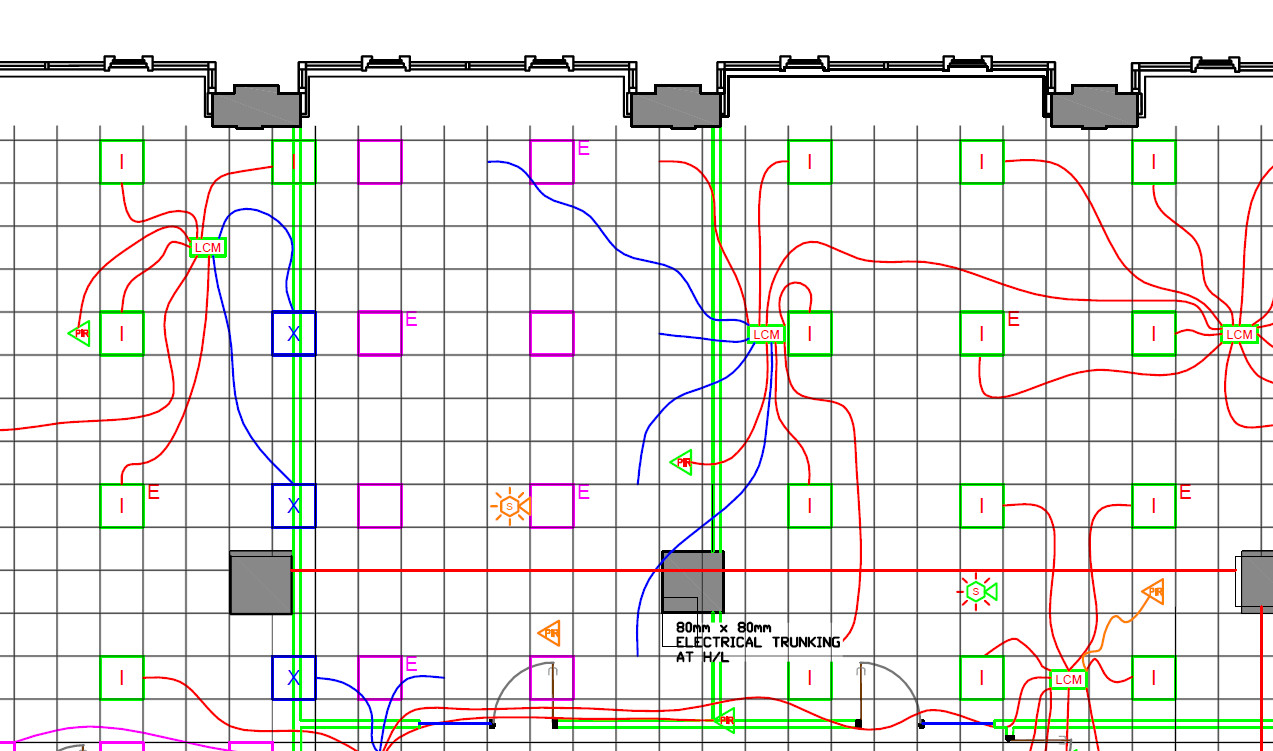Electrical drawing
Electrical drawings, sometimes referred to as wiring diagrams, are a type of technical drawing that provide visual representation describing electrical systems or circuits. They are used to explain the design to electricians or other workers who will use them to help install or repair electrical systems.
A set of electrical drawings on a project might include:
- A site plan which shows the location of the building and any external wiring.
- Floor plans which show the positions of electrical systems on each floor.
- Wiring diagrams which show the physical connections and layout of electrical circuits.
- Schedules and other information.
Electrical drawings for buildings tend to include the following details:
- How the electrical wires and other parts of the system are interconnected and switched.
- Where fixtures and other components connect to the system.
- Incoming power lines and their voltage, size, capacity and rating.
- Power transformers and their winding connection and means of grounding.
- The main switches, fused switches and tie breakers.
- Equipment such as batteries, air conditioning, solar panels, generators, and so on, including their voltage and size.
They typically feature complex symbols and annotation to represent and explain components of the system.
[edit] Related articles on Designing Buildings Wiki
- Component drawing.
- DC electricity networks.
- Detail drawing.
- Electrical appliance.
- Electrical control systems.
- Electrical engineer.
- Electricity.
- Electrician.
- Floor plan.
- Plumbing drawing.
- Protected circuit.
- Rewiring.
- Ring circuit.
- Section drawing.
- Shop drawings.
- Switchgear.
- Technical drawing.
- Types of drawings.
Featured articles and news
RTPI leader to become new CIOB Chief Executive Officer
Dr Victoria Hills MRTPI, FICE to take over after Caroline Gumble’s departure.
Social and affordable housing, a long term plan for delivery
The “Delivering a Decade of Renewal for Social and Affordable Housing” strategy sets out future path.
A change to adoptive architecture
Effects of global weather warming on architectural detailing, material choice and human interaction.
The proposed publicly owned and backed subsidiary of Homes England, to facilitate new homes.
How big is the problem and what can we do to mitigate the effects?
Overheating guidance and tools for building designers
A number of cool guides to help with the heat.
The UK's Modern Industrial Strategy: A 10 year plan
Previous consultation criticism, current key elements and general support with some persisting reservations.
Building Safety Regulator reforms
New roles, new staff and a new fast track service pave the way for a single construction regulator.
Architectural Technologist CPDs and Communications
CIAT CPD… and how you can do it!
Cooling centres and cool spaces
Managing extreme heat in cities by directing the public to places for heat stress relief and water sources.
Winter gardens: A brief history and warm variations
Extending the season with glass in different forms and terms.
Restoring Great Yarmouth's Winter Gardens
Transforming one of the least sustainable constructions imaginable.
Construction Skills Mission Board launch sector drive
Newly formed government and industry collaboration set strategy for recruiting an additional 100,000 construction workers a year.
New Architects Code comes into effect in September 2025
ARB Architects Code of Conduct and Practice available with ongoing consultation regarding guidance.
Welsh Skills Body (Medr) launches ambitious plan
The new skills body brings together funding and regulation of tertiary education and research for the devolved nation.
Paul Gandy FCIOB announced as next CIOB President
Former Tilbury Douglas CEO takes helm.
UK Infrastructure: A 10 Year Strategy. In brief with reactions
With the National Infrastructure and Service Transformation Authority (NISTA).























